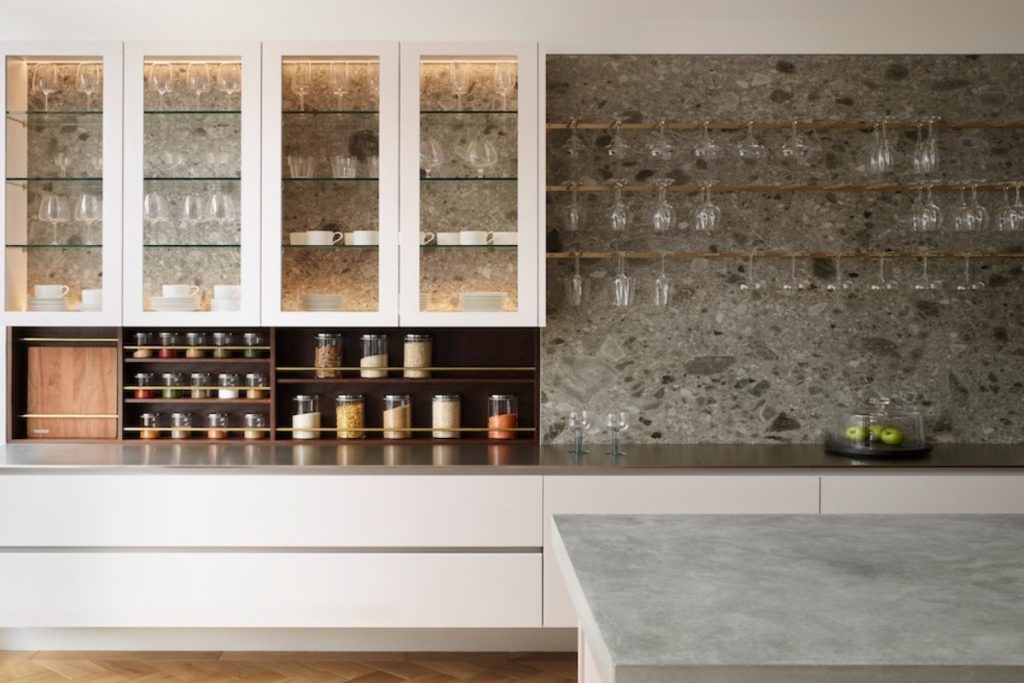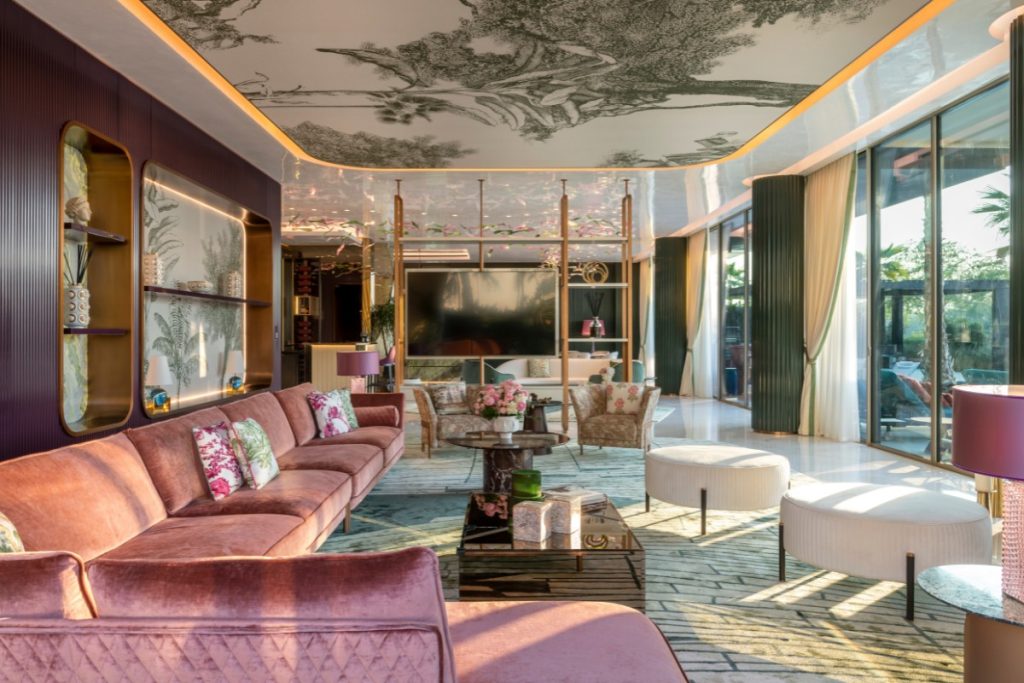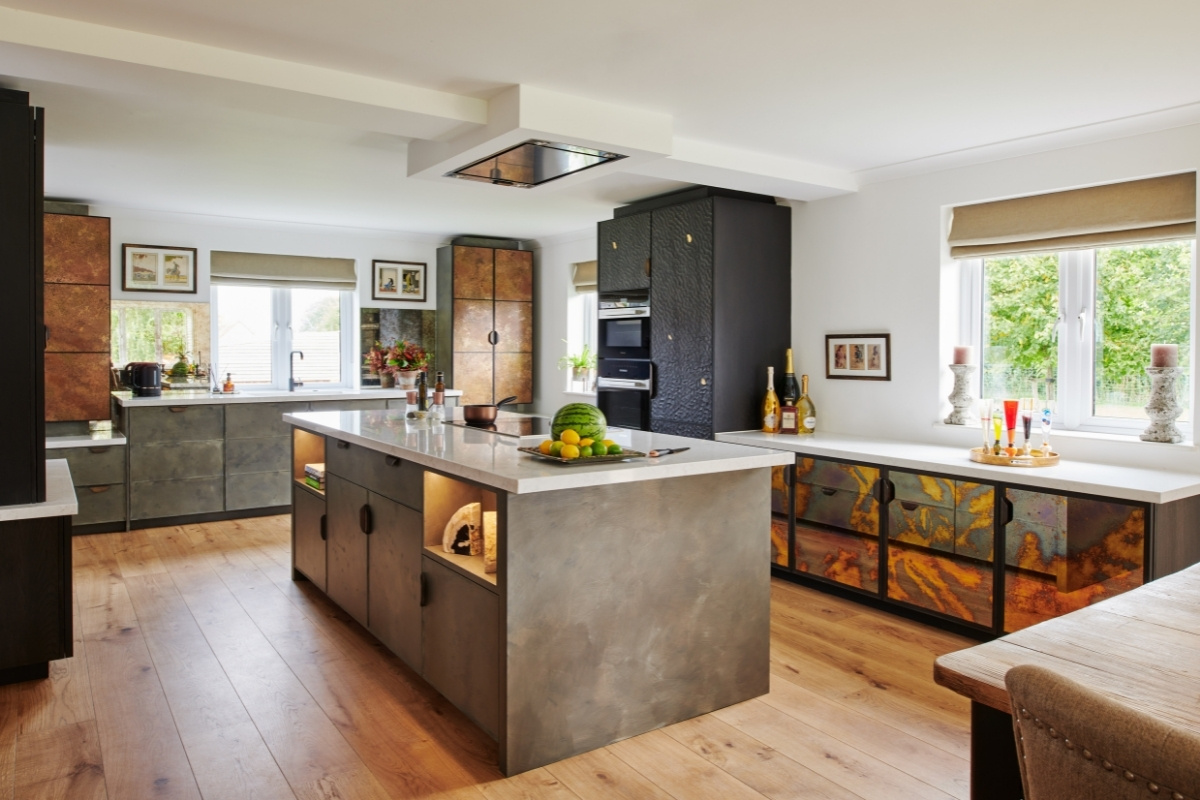 18th April 2022 | IN KBB DESIGN | BY SBID
18th April 2022 | IN KBB DESIGN | BY SBIDWhat strikes you about this West Sussex kitchen on first glance is the sheer number of finishes and techniques on display. Testament to the craftsmanship and skill involved in creating it, the space has been transformed from its previous incarnation. “When I first visited the house, the kitchen was dated but the room as a whole was bursting with potential,” remembers Charlie Smallbone, founder of Ledbury Studio. Here, he reveals how he channelled his client’s love of antiques and eclecticism to turn it into a sociable space designed for serious cooking.
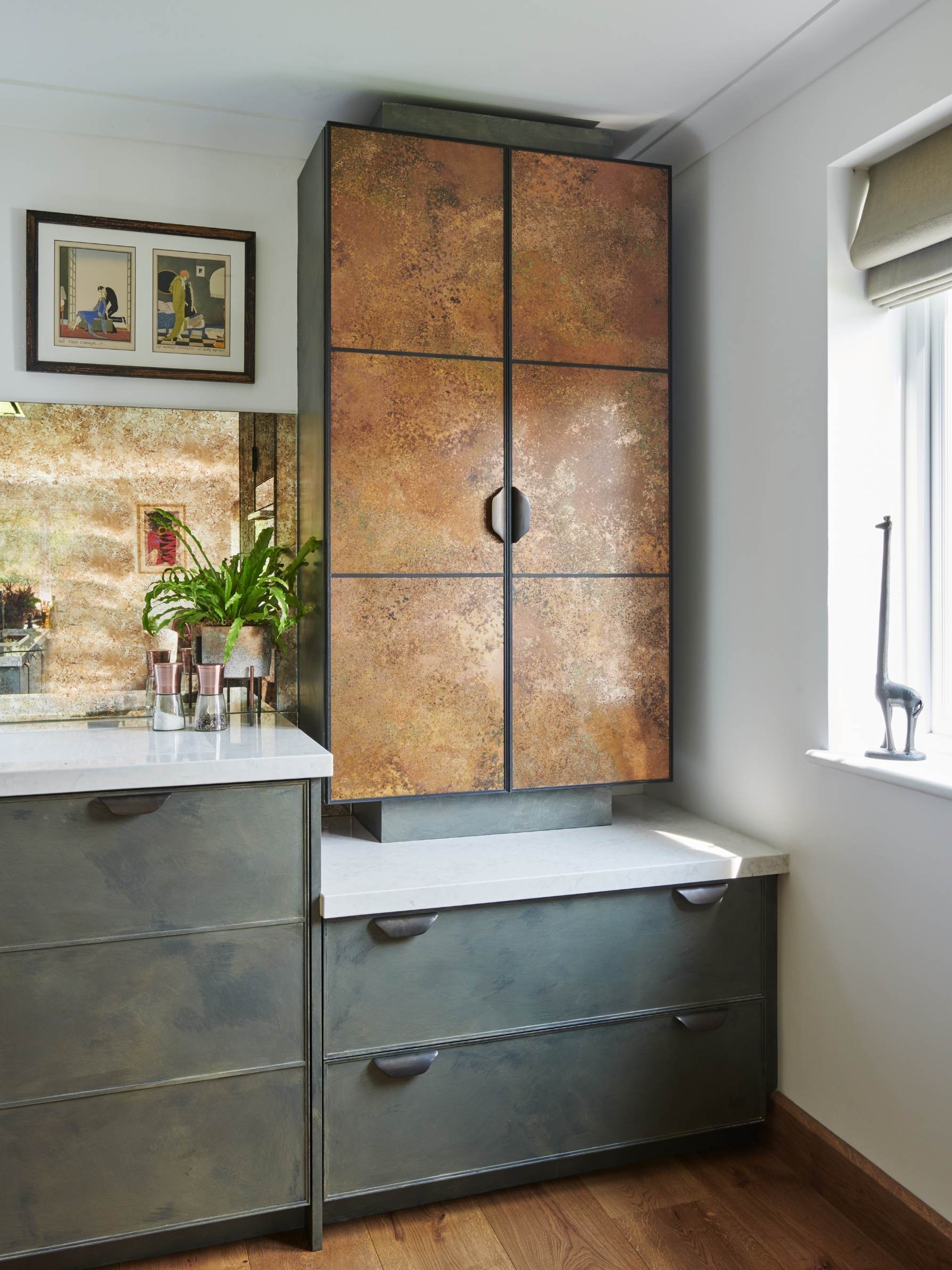
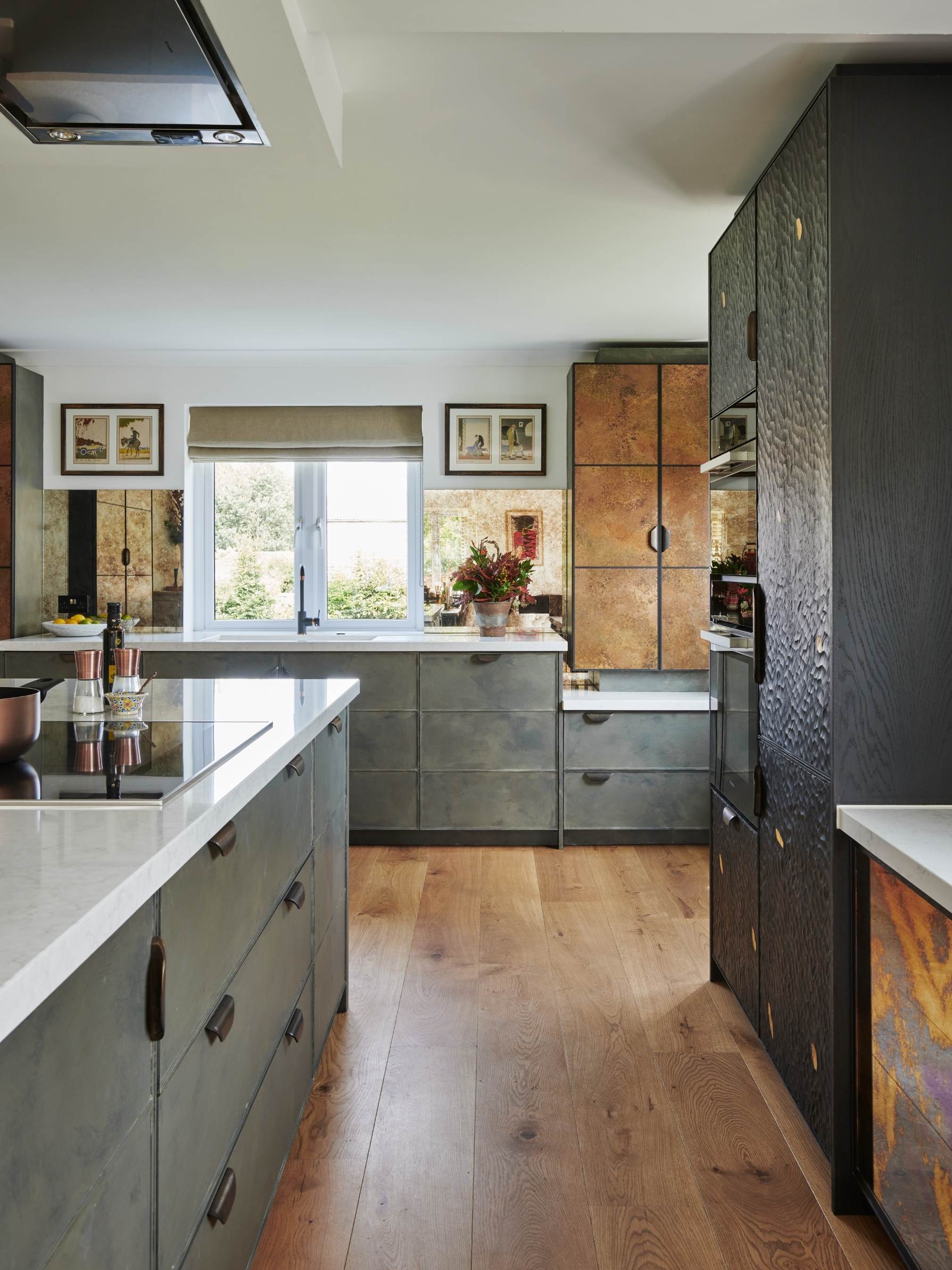
What was the brief?
The couple are keen on entertaining, but the kitchen also has to function as an ad-hoc office, as our client’s partner works from home. And then, because our client works in an auction house and loves antiques, they wanted us to take an eclectic approach to the design with a rich mix of materials and finishes. In this case, less is not more! My brief was to create the feel of freestanding furniture, rather than of a fitted kitchen – so it looks like somebody has gone out and bought lots of lovely pieces. As such, the kitchen we designed for the couple is a beautiful, informal, living, dining and kitchen space that ticks all boxes.
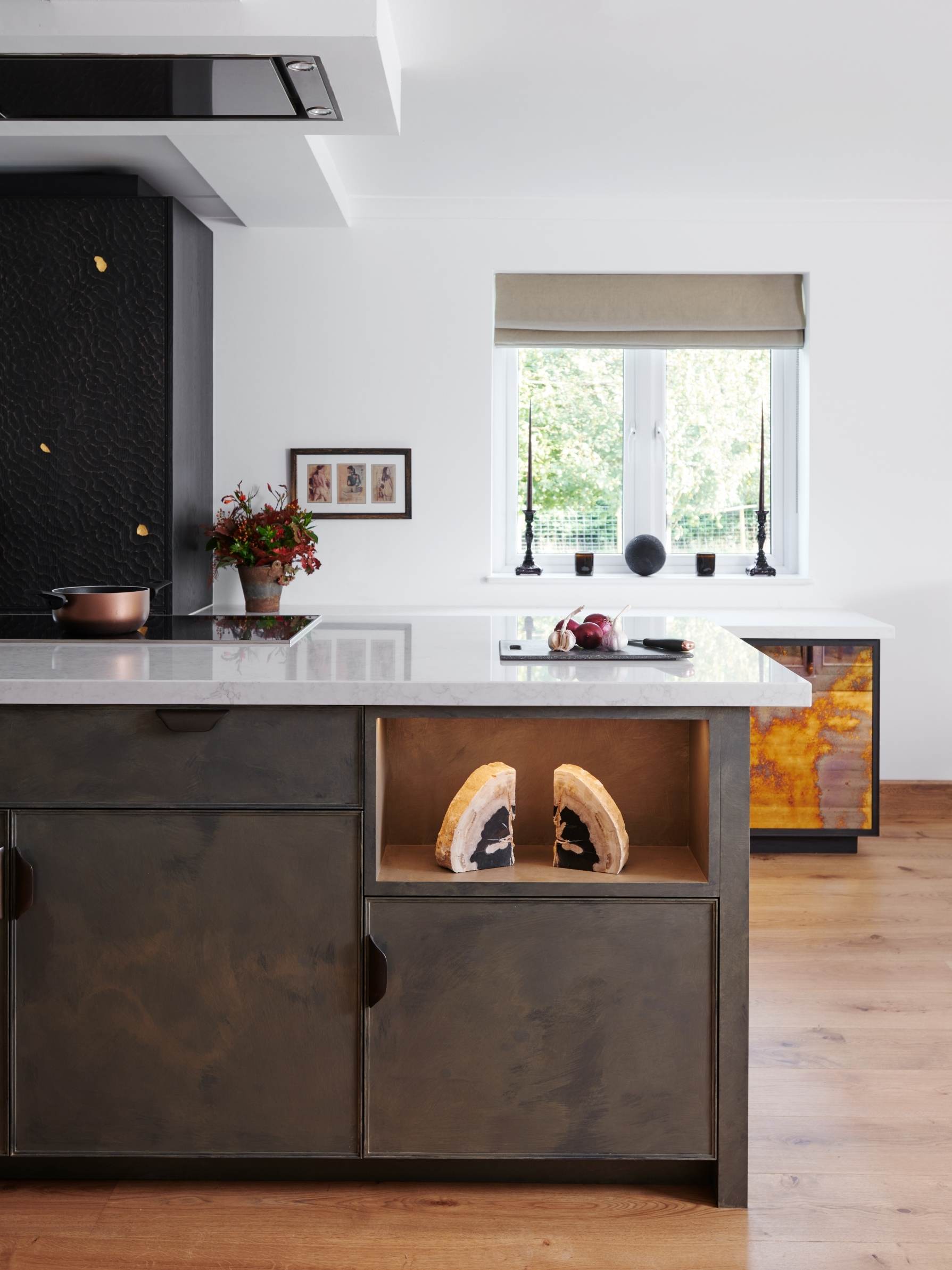
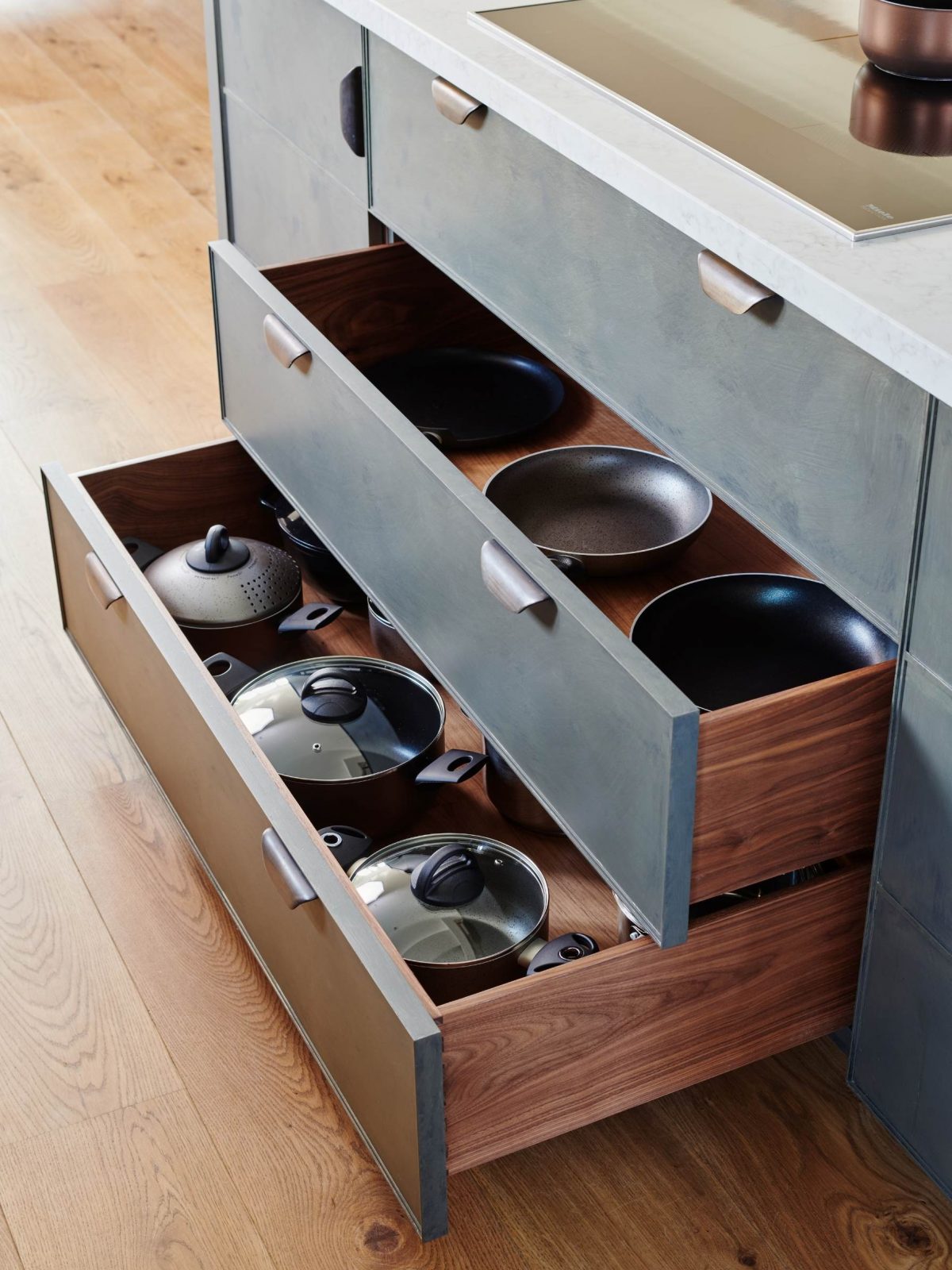
What can you tell us about the metallic finishes?
When the couple visited our Notting Hill showroom, they instantly fell in love with our signature Metallics Collection copper-fronted cabinets. Naturally, we integrated two into the design — either side of the window for a lovely framing effect. The copper is a living finish that will mature over time, developing a rich patina.
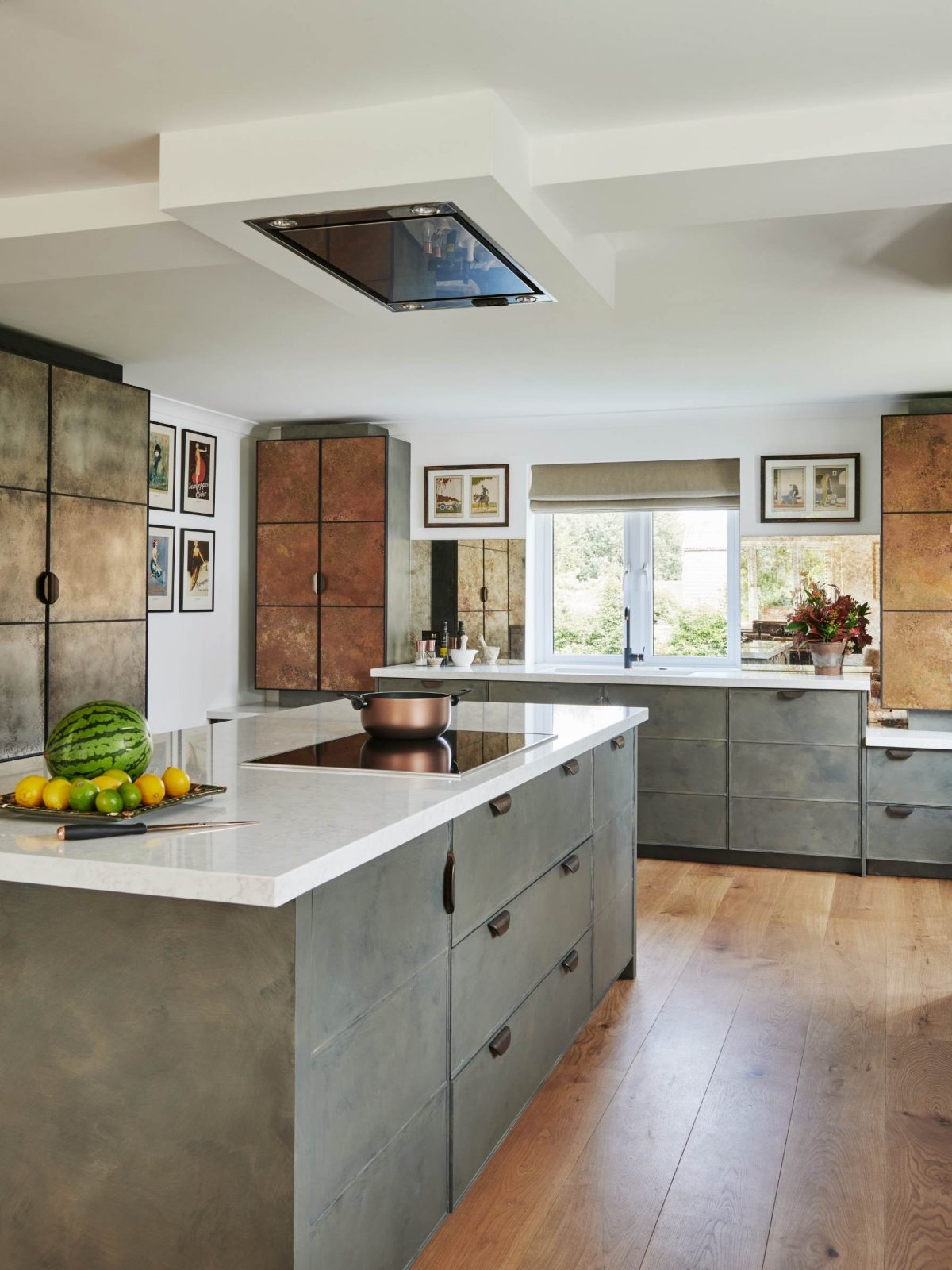
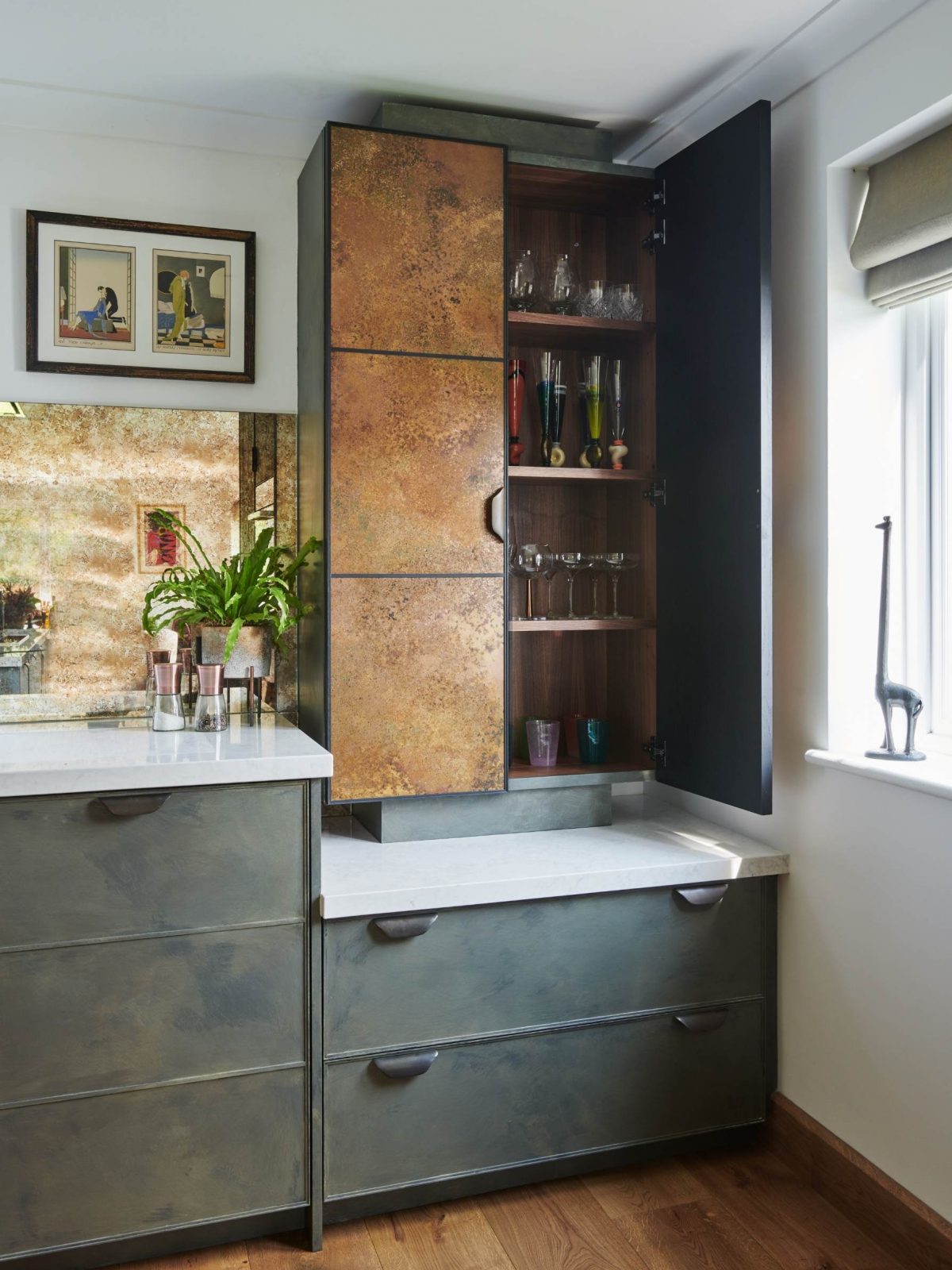
How did you create the paint effect on the cabinetry?
The painted cabinets were given a primer in our workshops and then hand painted in situ by our artist Emma, in close collaboration with the client. The beautiful burnished paint effect was inspired by the grey-green elements in a favourite copper vase. There are four hand-painted layers, one of which is a tinted pearlescent. This makes the paint shimmer, so the colour isn’t flat, and it’s this that unites all the finishes in the kitchen.
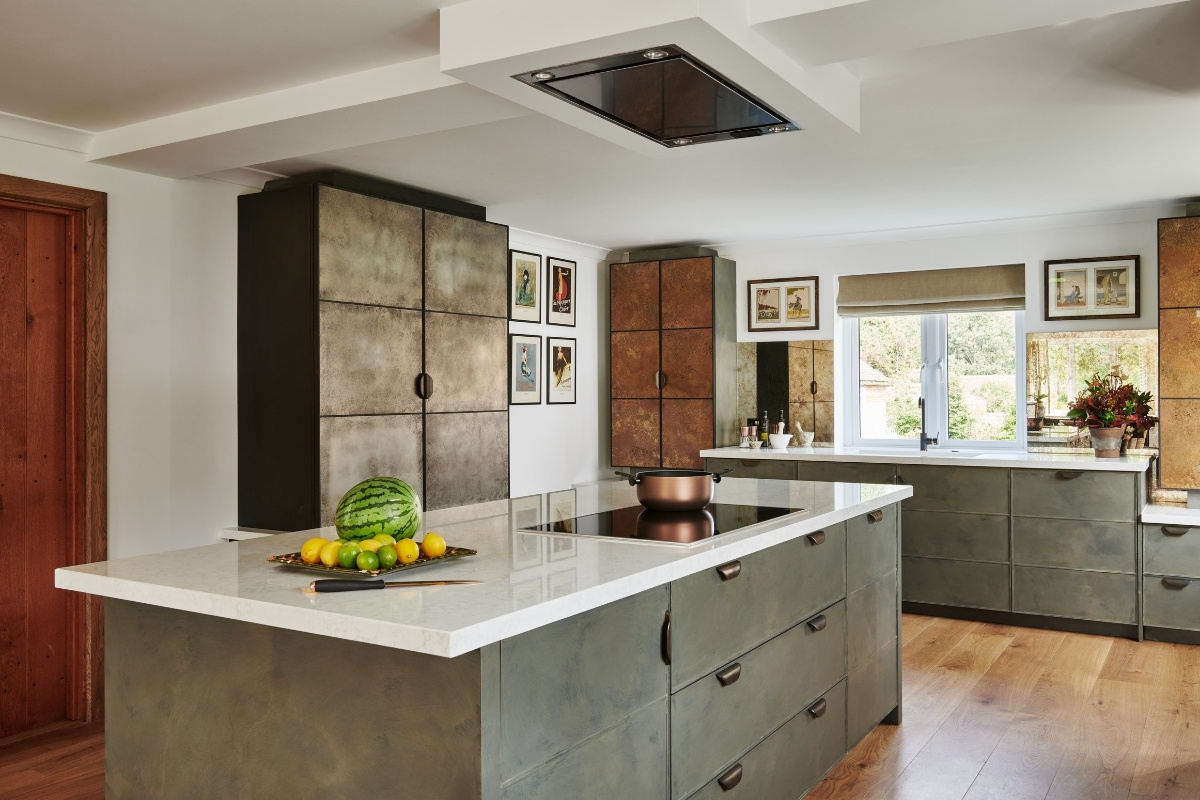
What is the purpose of the freestanding cabinet?
This tall freestanding piece acts as a breakfast cupboard housing a coffee machine, toaster, kettle and all other breakfast paraphernalia. It has the aged-pewter finish on the doors, over which we’ve put a protective finish so that fingerprints don’t mark it and the surface is easy to clean.
The cabinets below the breakfast cupboard feature a pattern we call Choppy Water. Solid oak panels were carved and then stained dark to create the effect. If you look carefully, you’ll see that it’s been finished with gold-leaf appliqué, which injects a dash of glamour into the kitchen. Both the wood and the appliqué are protected by a 5% sheen lacquer. The Choppy Water finish has also been used on the appliance housing opposite.
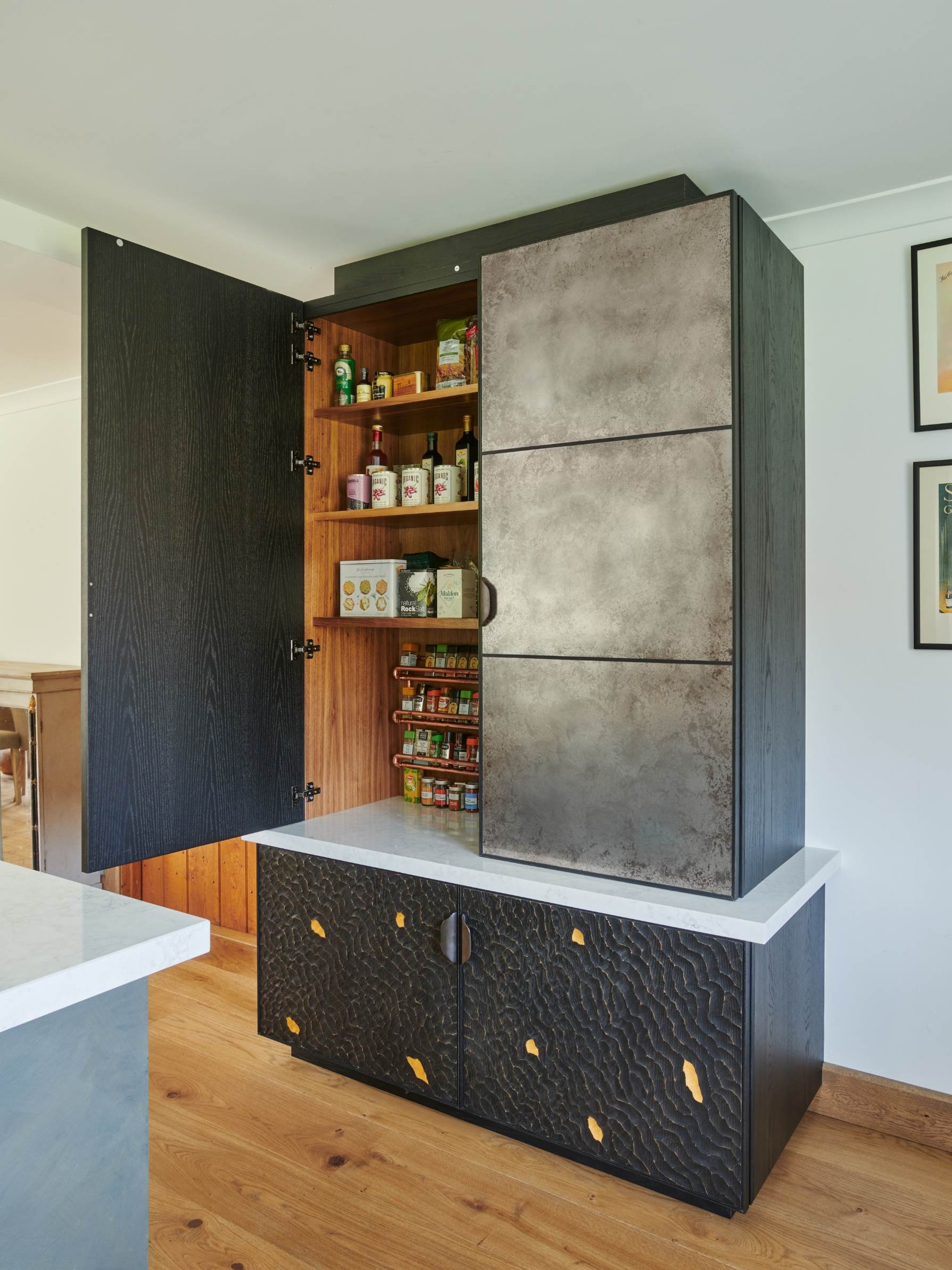
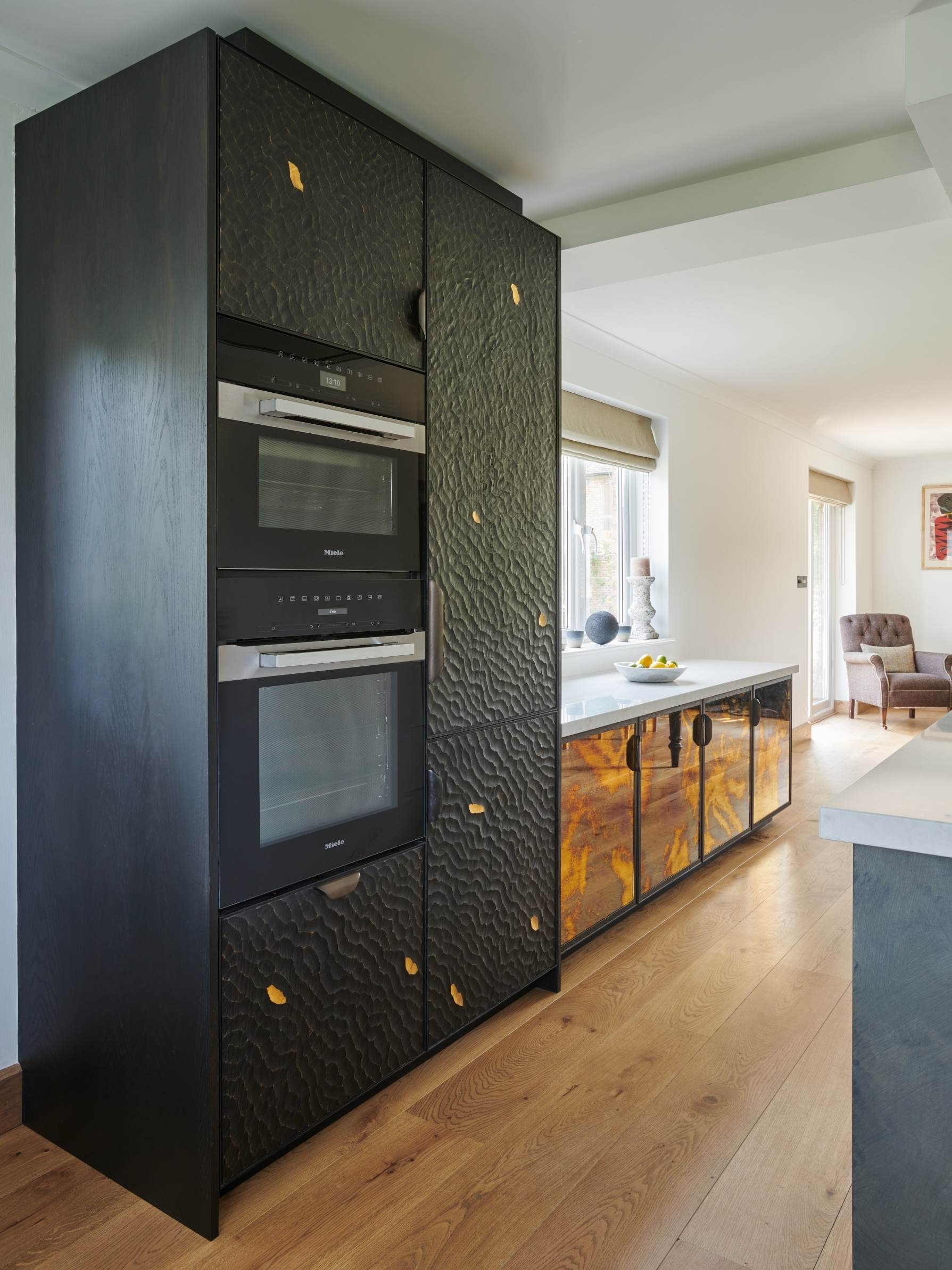
What material did you use for the worktops and why?
We used the same work surface throughout, which is a man-made quartz called Arabesque from Stone Italiana. It is a very practical solution — non porous, hard wearing, resistant to heat and scratching, and does not require sealing. What’s more, it allowed us to seamlessly incorporate a sink, also in Arabesque. Losing the join lines between the worktop and the sink lends the kitchen a sleek look.
Ledbury Studio kitchens start from £50,000.
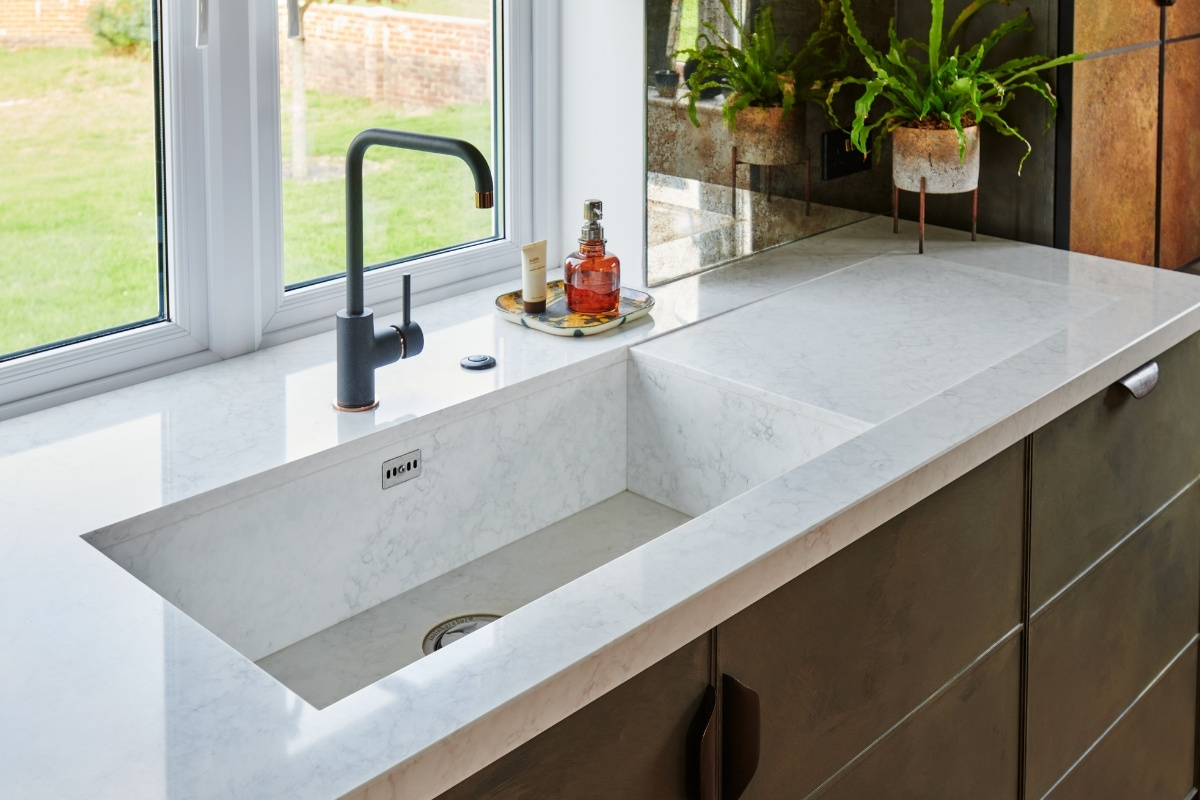
About Ledbury Studio
Charlie Smallbone needs little introduction. The founder of iconic brand Smallbone of Devizes, he has been pushing the boundaries of kitchen design for over 40 years. Charlie’s latest venture, Ledbury Studio, was born of his desire to harness the beauty of original materials whilst creating practical kitchens that exude style and elegance.
If you’d like to feature your projects here, get in touch to find out more.
If you’d like to become SBID Accredited, click here for more information.
